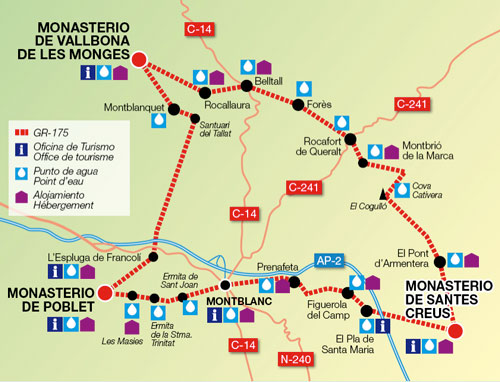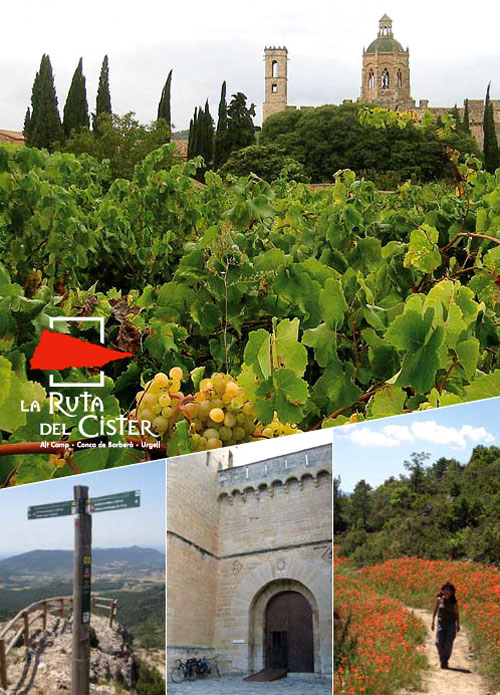Cistern Route
Over the centuries, Costa Daurada has been home to some of the most emblematic civilisations in human history.. Among the most important examples of this artistic legacy, the ancient Roman heritage sites in Tarragona and Cistercian heritage sites in Poblet stand out. Both have been declared official World Heritage Sites by the UNESCO
The route begins at the Santes Creus monastery, which was founded in 1150 AD and is the only one no longer inhabited by monks. Visitors to the Santes Creus complex can also see the Vila-rodona columbarium, the tomb of King Pere el Gran (Peter III of Aragon) or the Romanesque church of El Pla, dedicated to St. Mary. The monastery complex was declared a National Historical and Artistic Monument in 1951. The crown jewel of the route, however, is the Poblet monastery, declared a UNESCO World Heritage Site in 1991. Built the same year as the Santes Creus monastery, the Poblet monastery is still home today to an order of monks. The monastery is also home to two supplementary museums: the King Martin's Palace Museum and the Restoration Museum. The route ends in Vallbona de les Monges, in the province of Lleida. This town's monastery joined the Cistercian order in 1176 and is female, that is, a convent. It has been inhabited by nuns without interruption for 800 years.
There are some striking experiences to be enjoyed along the way, such as evening prayers at Poblet accompanied by the monks’ canticles following a superb walk over the wooded hills of Prades - Paratge de Poblet; the idyllic approach to Vallbona de les Monges through the vineyards of La Conca and the fields of L’Urgell, which complements perfectly the nuns’ contemplative Vespers; or a hike along the rugged ridge of El Cogulló and the contrasting flatlands of L’Alt Camp to get to the impressive monastery of Santes Creus.
The GR 175, the Cistercian Route, is more than just a footpath, it is the link between the three most outstanding monasteries of the Cistercian Order in Catalonia, a walk through the history of its towns, the close-up to some man-modelled lands and some pristine natural features, the taste of an original local cuisine, rooted as firmly to the landscape as the people who live and love the area. This route is all you are willing to come across. It is the GR 175, the Cistercian Route.
Más información: www.larutadelcister.info

